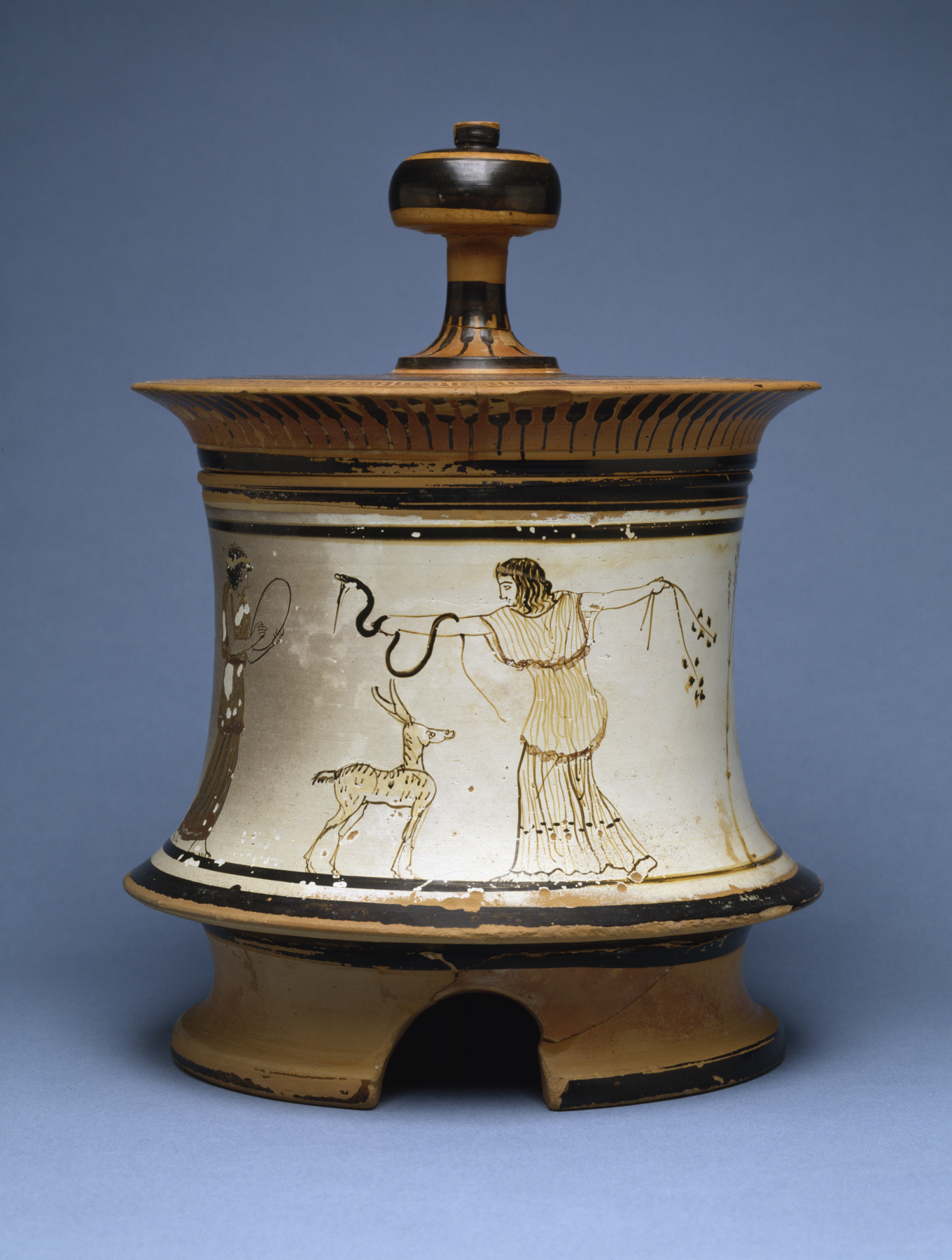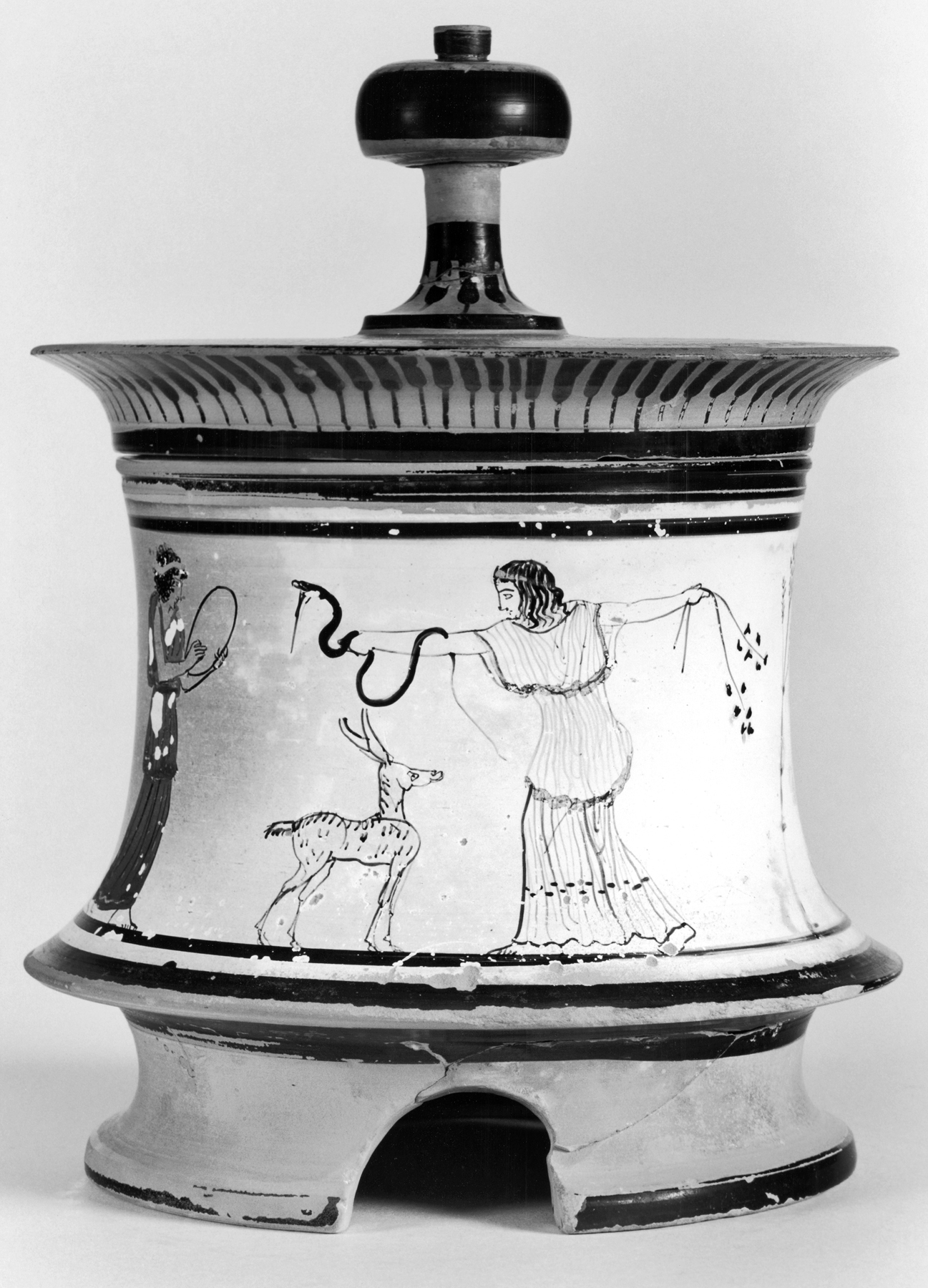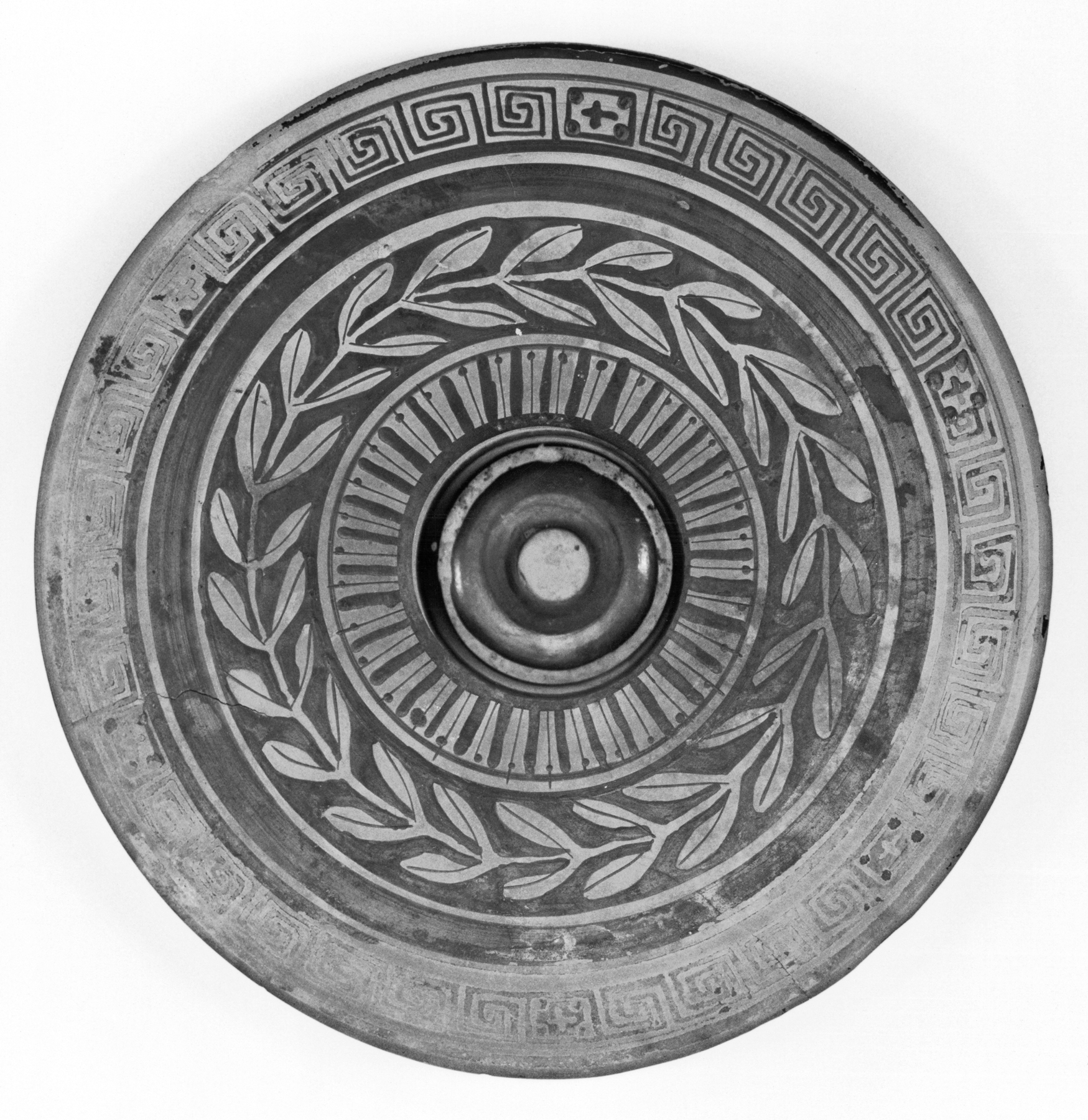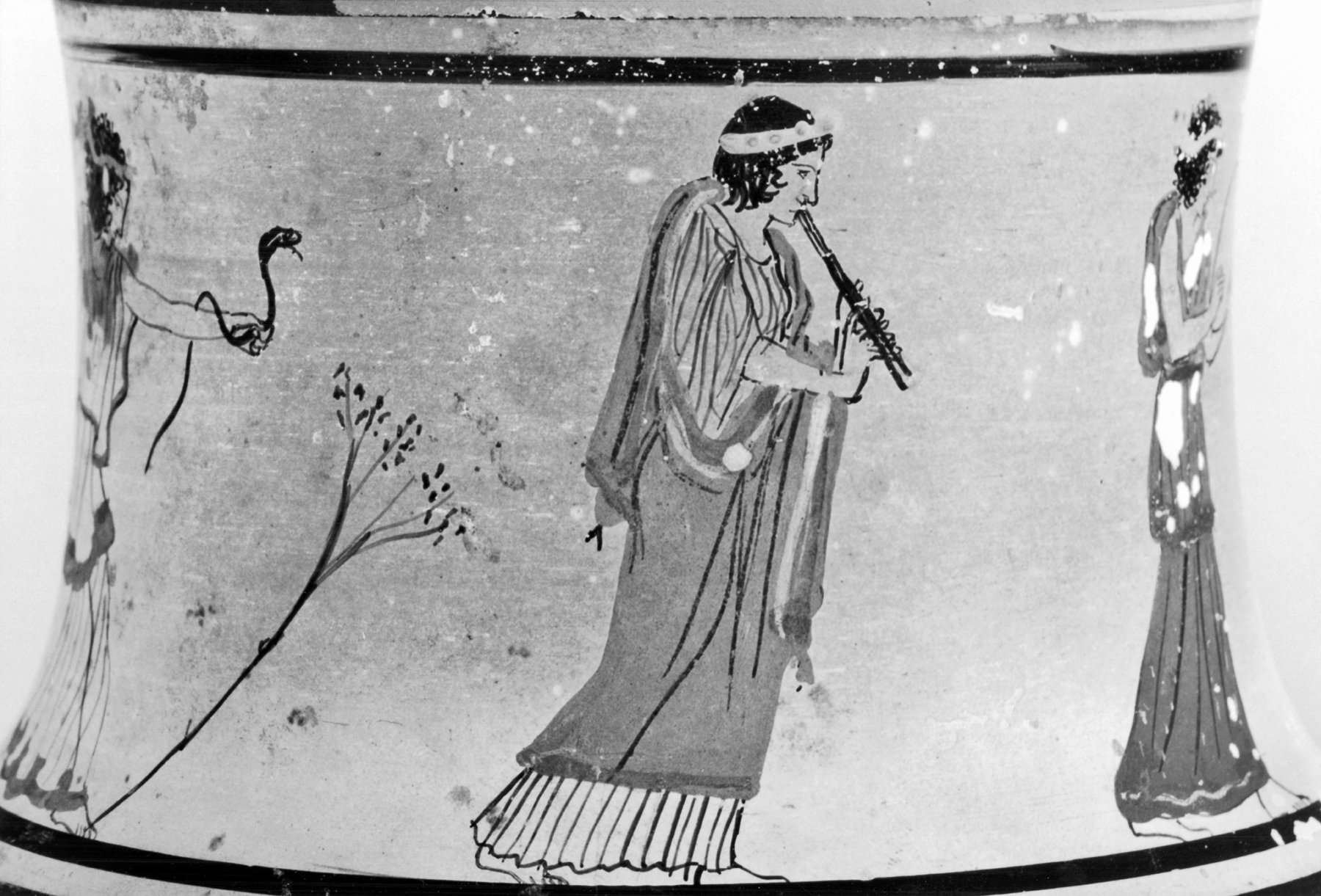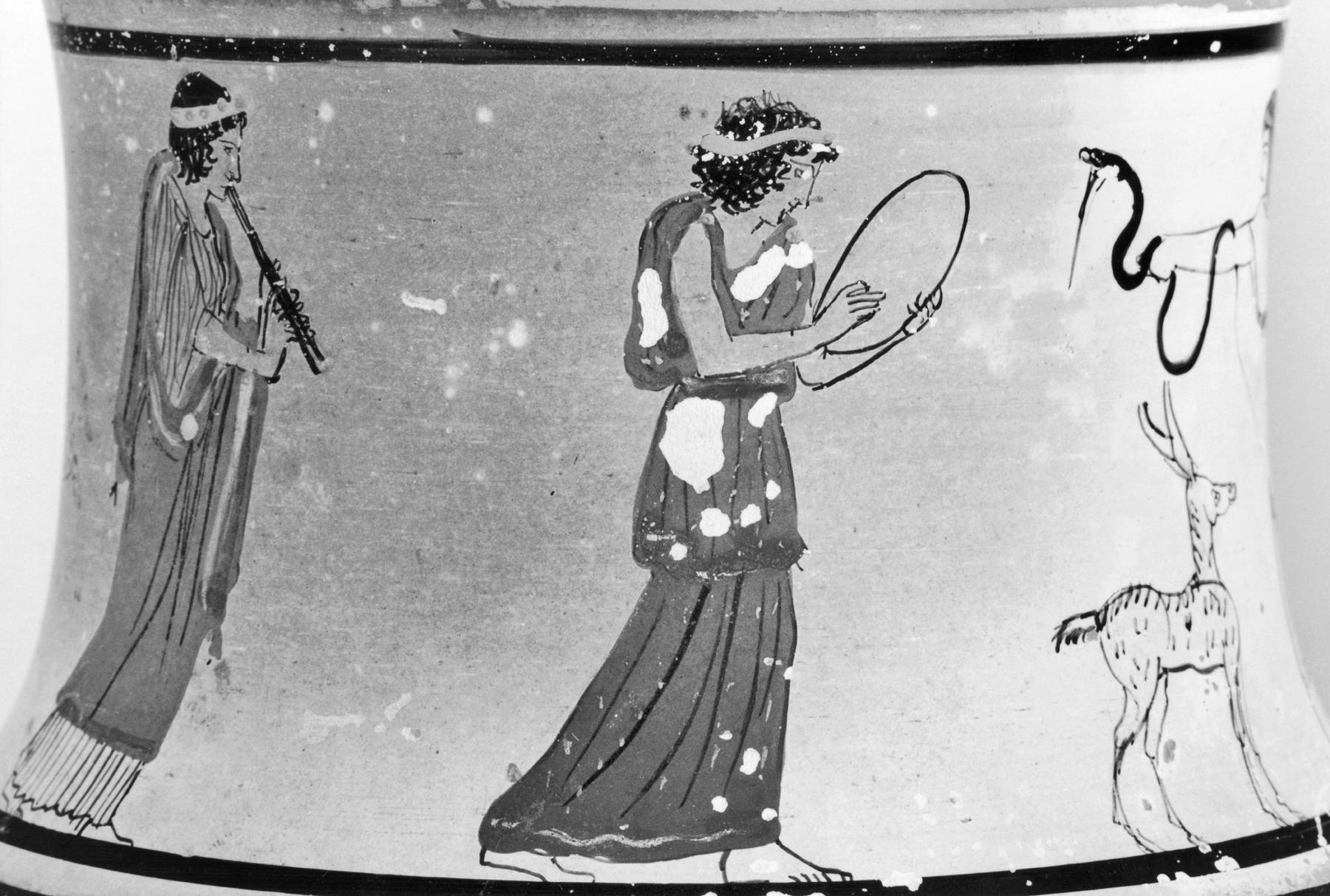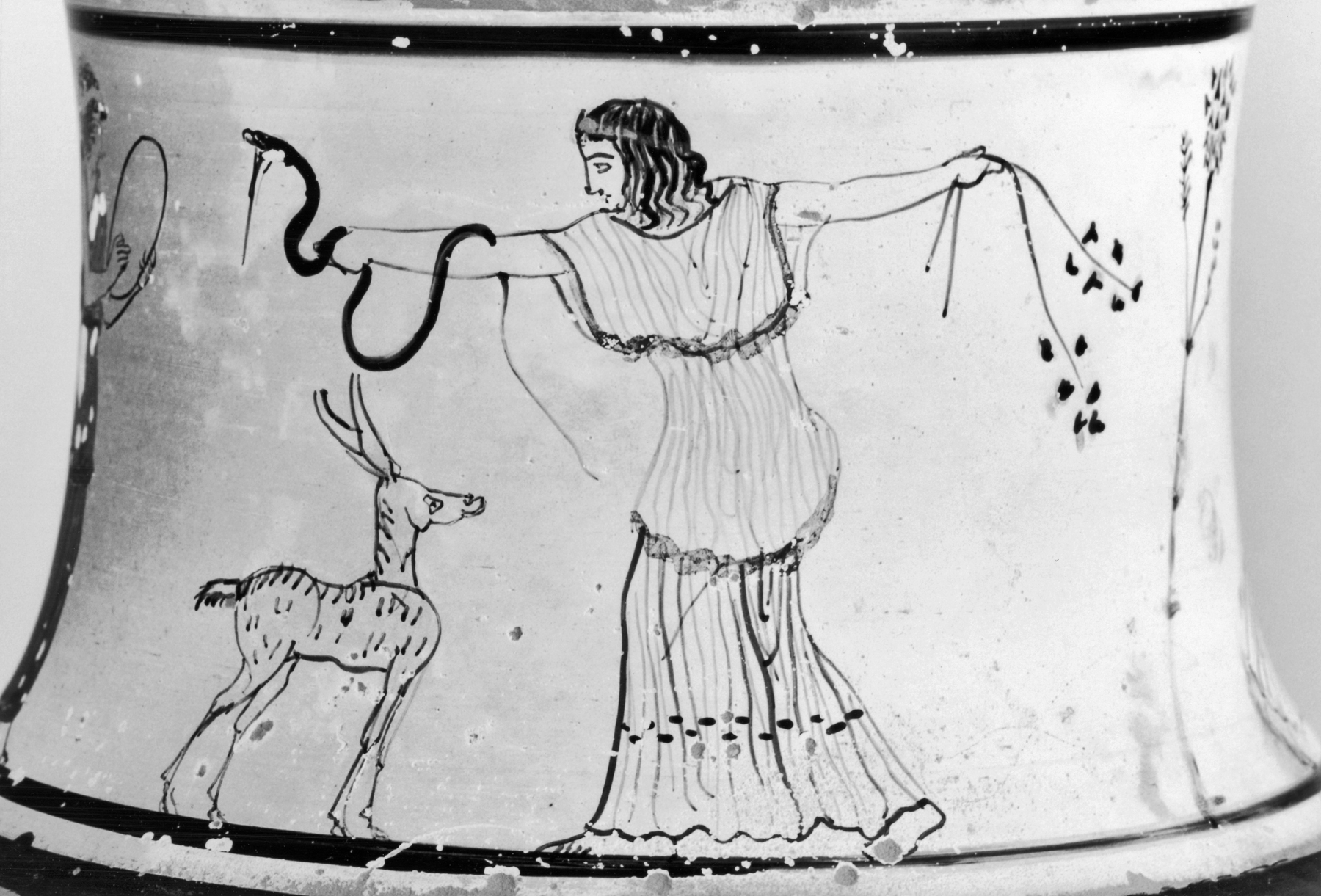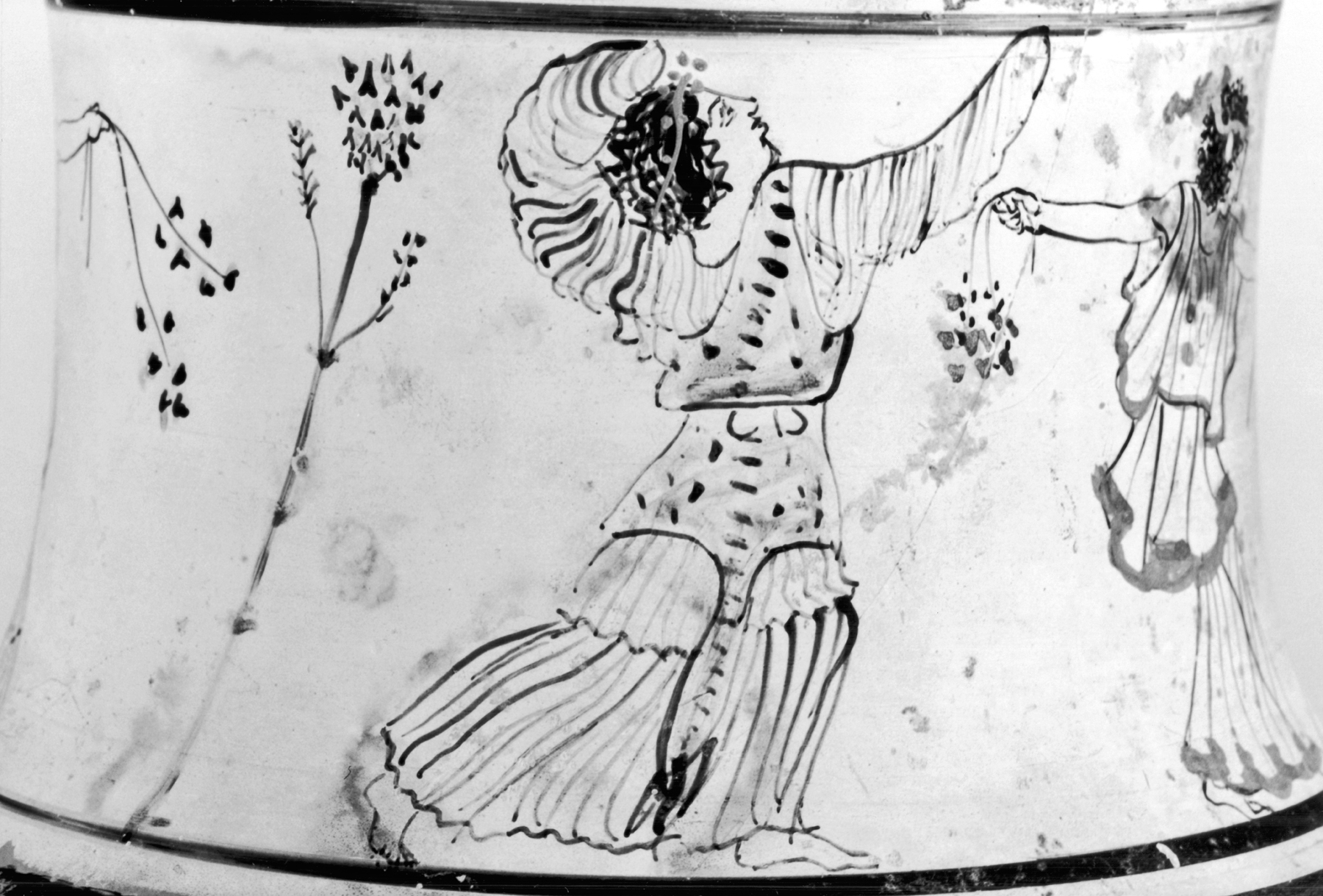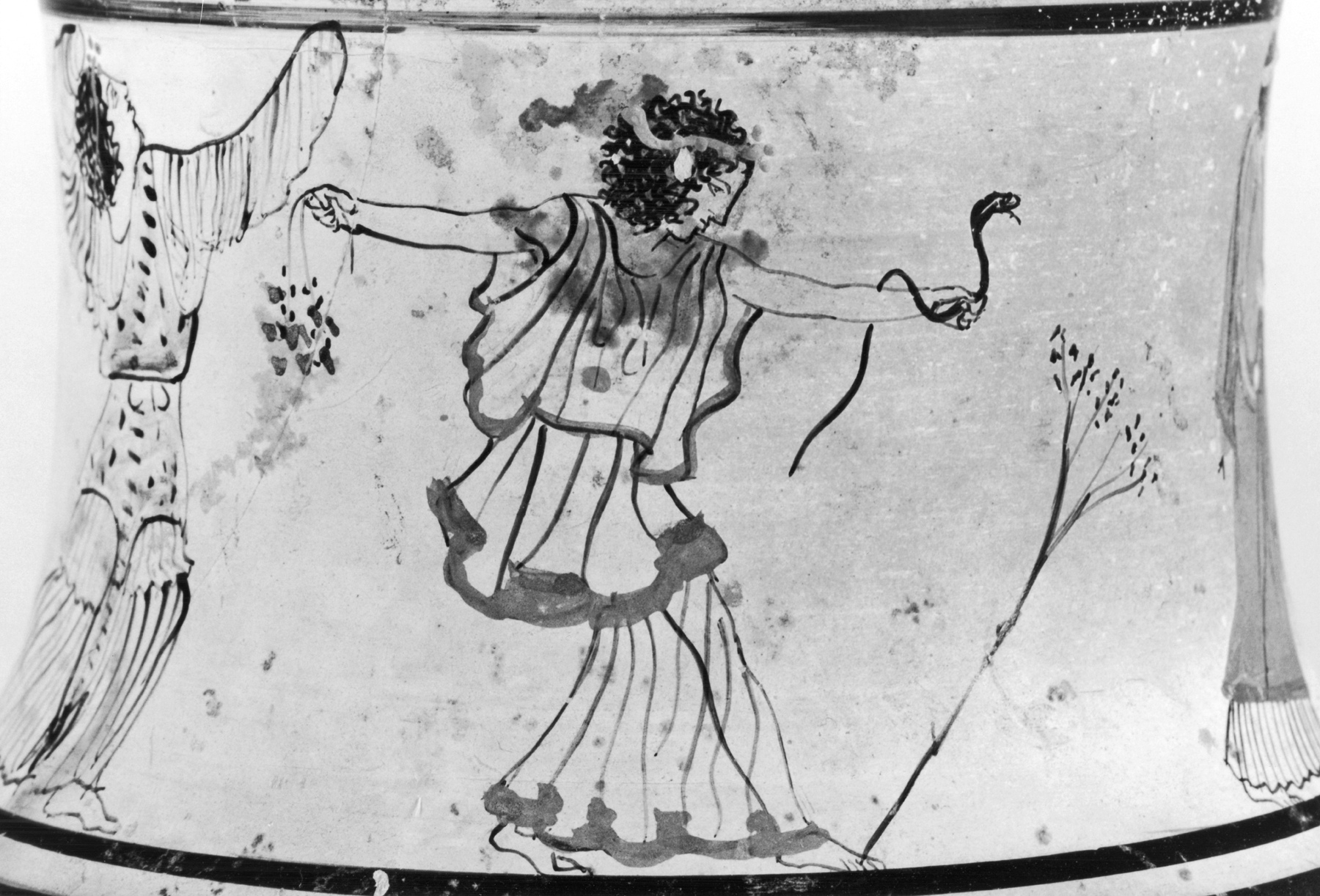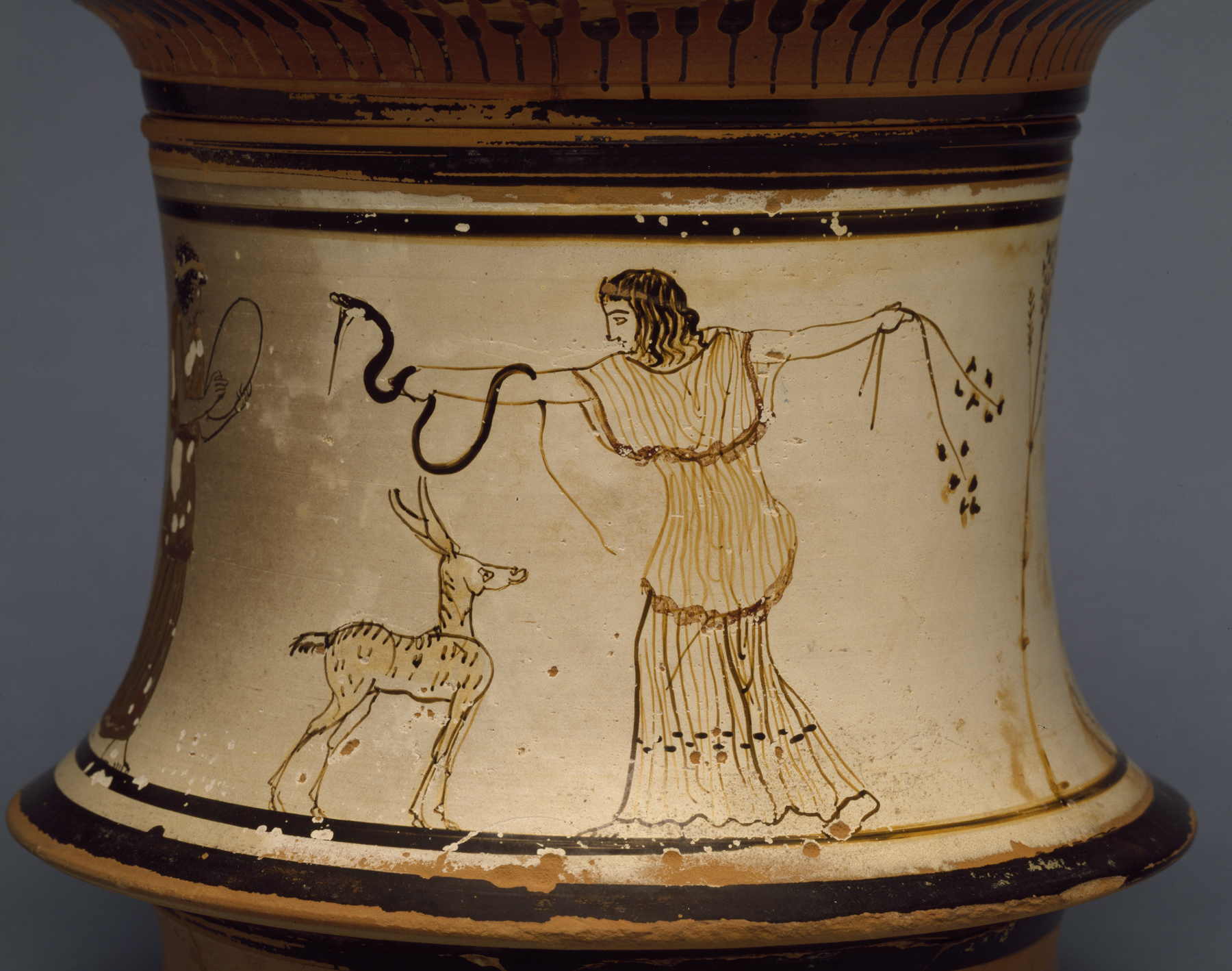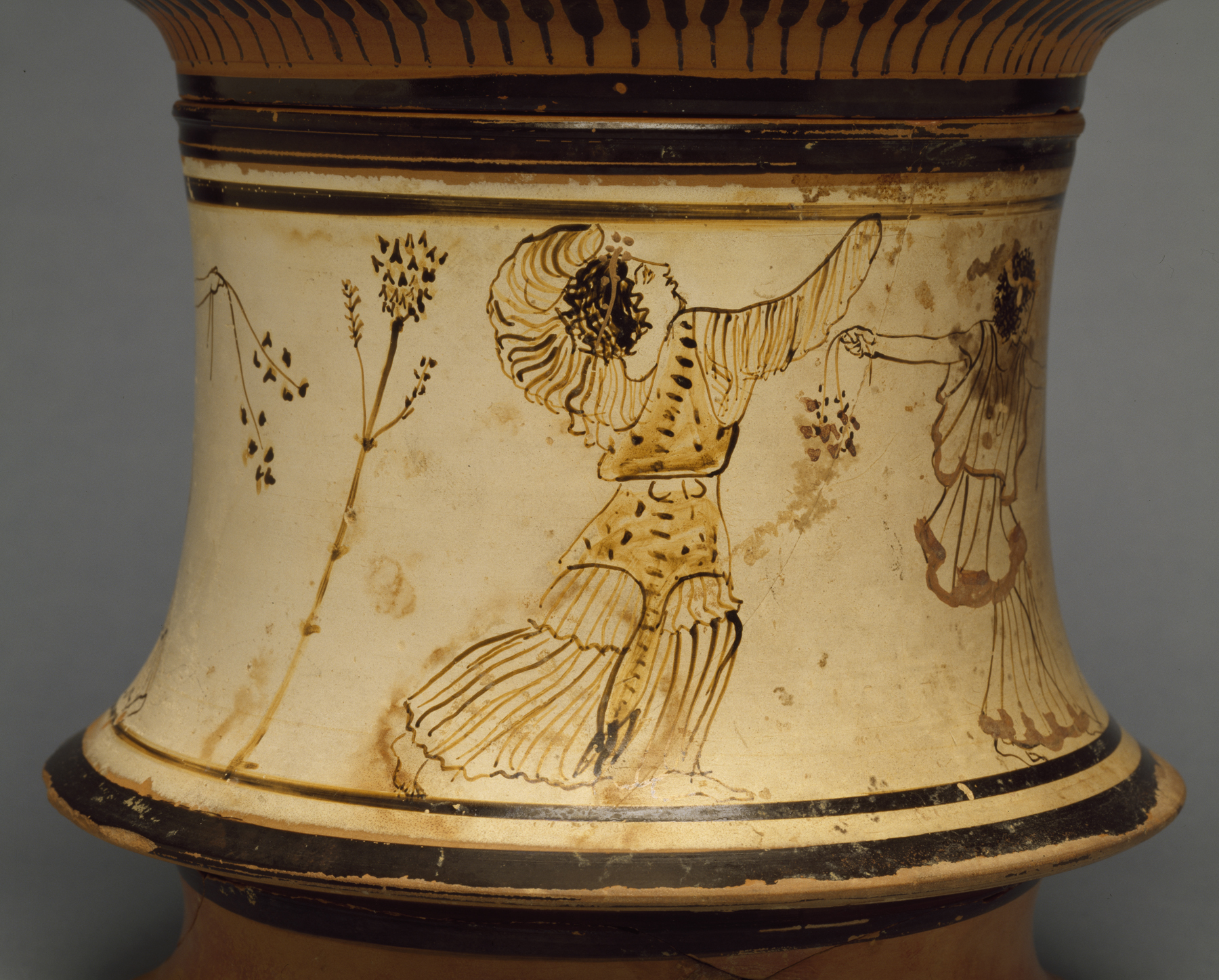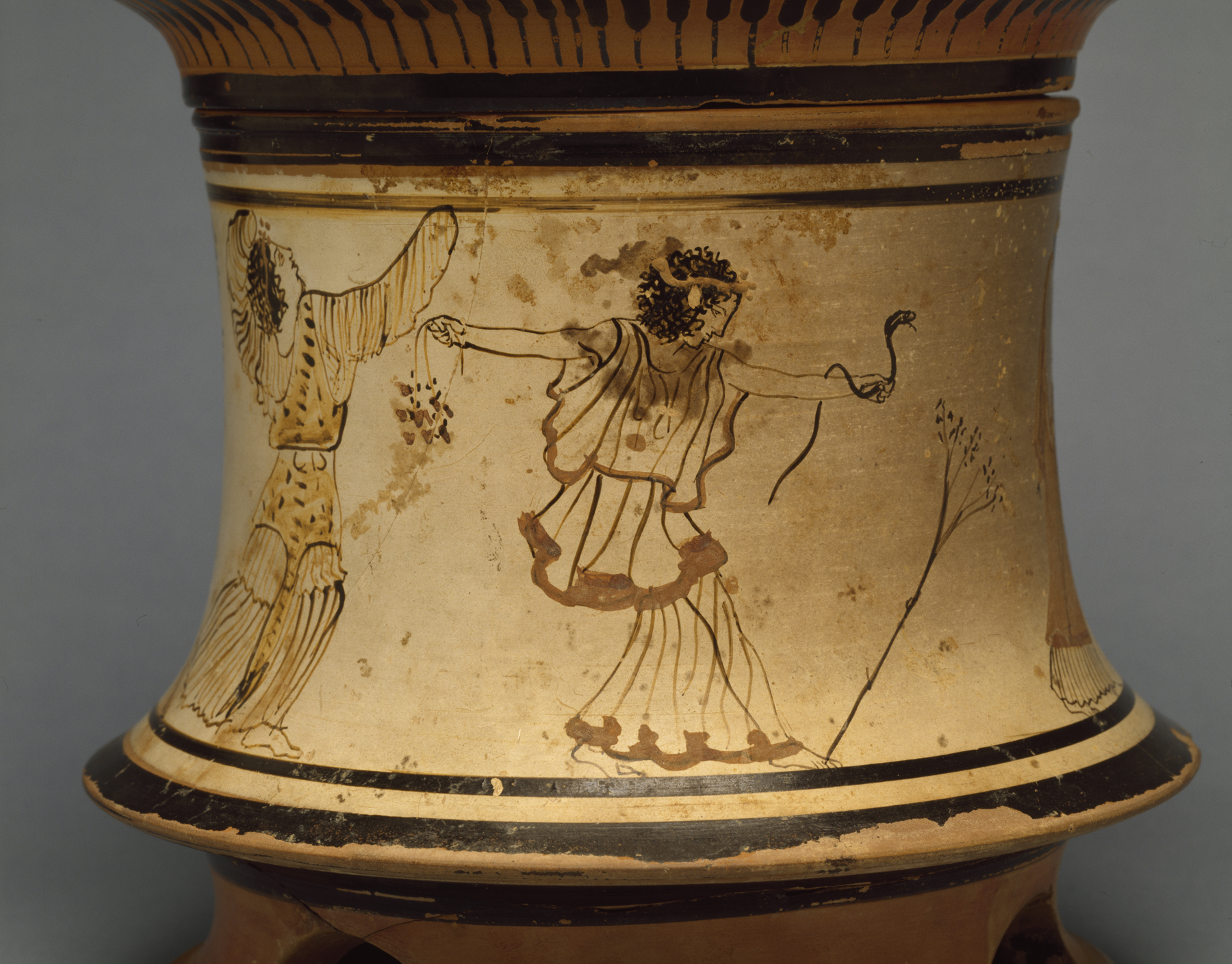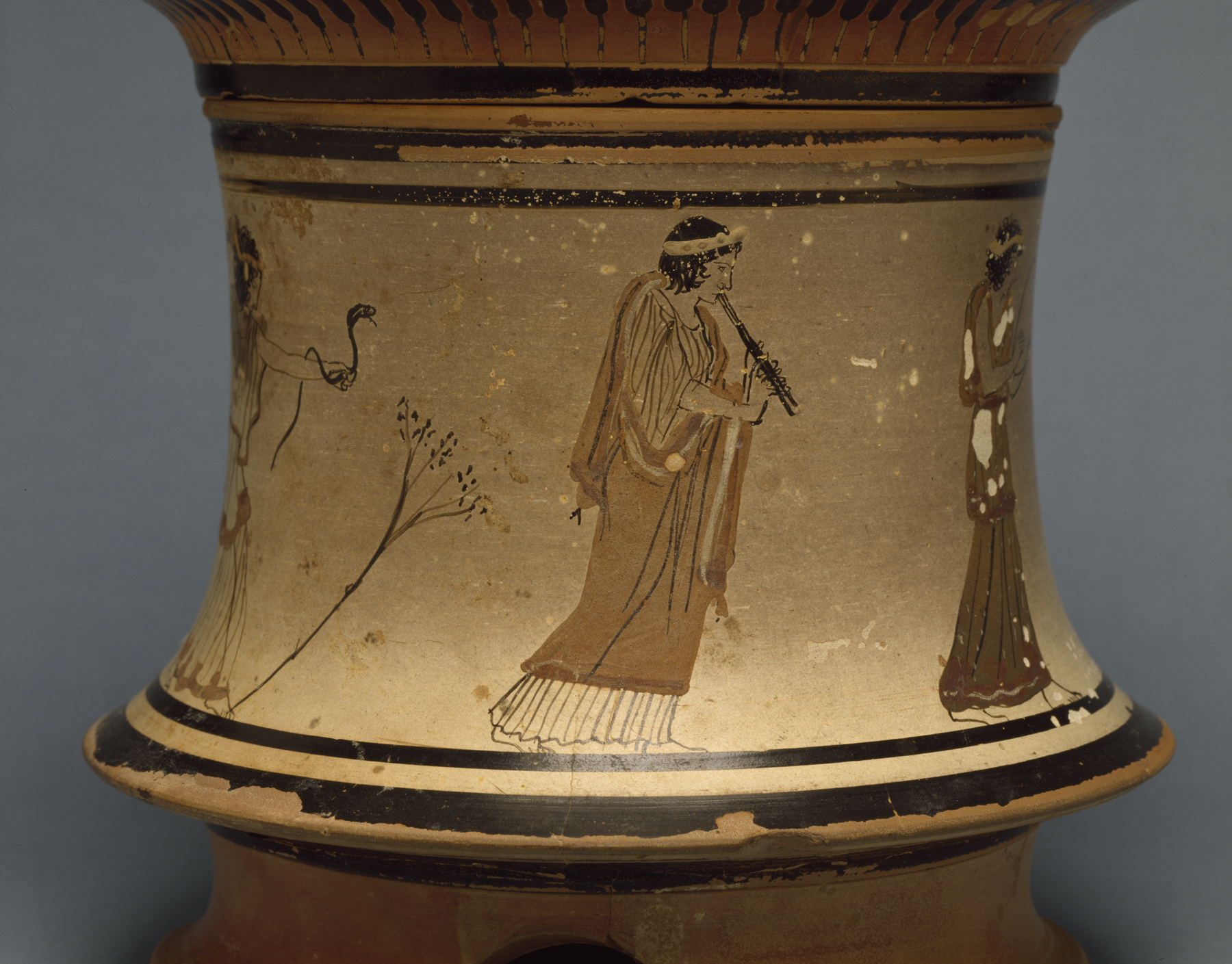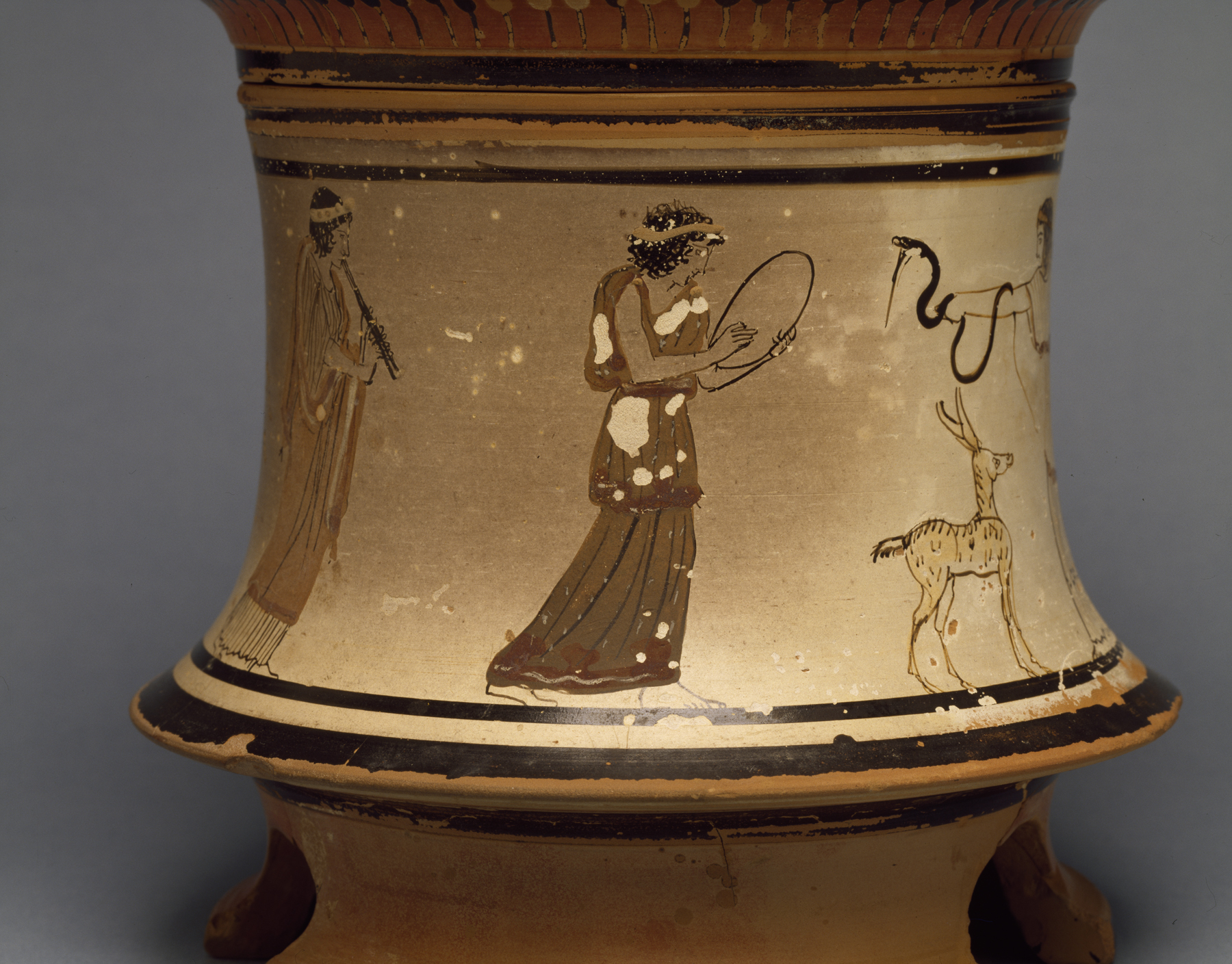Pyxis with Maenads
(Ancient Greece )
Five female figures are rendered on the walls of this vessel, dancing ecstatically to flute (aulos) and drum (tympanon) music. They are maenads, female followers the wine-god Dionysus, performing a ritual as if in a reverie. The maenads are crowned with ivy leaves and berries, and dance with bare feet. Their billowing garments are rendered in thin lines in black, brown, red, and yellow that suggest the undulation of their frenzied bodies. The snakes, fawns, and fennel stalks (thyrsos) in the scene are typical attributes of maenads, further indicating their association with the wildness of the Dionysian realm.
White ground vases become common in Athens during the 5th century BCE. Painters would use a clay that was free from iron oxides to create the white surface overtop the red clay of the vessel. While early examples of white ground painting use a limited palette of earth tones, painters begin adding such colors as pink, blue, and violet around 450 BCE, creating a more realistic effect. However, the white ground technique is more fragile than the red- and black-figure vase painting, making it unsuitable for vessels that were used regularly. Consequently white figure was reserved for funerary dedications that would not have been handled a lot. These polychrome vessels are one of scholars’ best sources for approximating the appearance of Greek wall- and panel-paintings that only remain in ancient literary descriptions.
Provenance
Provenance (from the French provenir, 'to come from/forth') is the chronology of the ownership, custody, or location of a historical object.
Sotheby's, London, December 7, 1920, no. 257; Joseph Brummer, Paris and New York, 1920, by purchase [inv. no. P302]; Brummer Estate Sale, Parke-Bernet Galleries, New York, June 8-9, 1949, part III, lot 12, fig. 1; Walters Art Museum, 1949, by purchase.
Exhibitions
| 1995-1996 | Pandora's Box: Women in Classical Greece. The Walters Art Gallery, Baltimore; Dallas Museum of Art, Dallas; Antikenmuseum Basel und Sammlung Ludwig, Basel. |
| 1978 | In Search of Ancient Treasure: 40 Years of Collecting. The Walters Art Gallery, Baltimore. |
Geographies
Greece, Athens (Place of Origin)
Measurements
H: 7 15/16 x Diam: 5 5/8 in. (20.1 x 14.3 cm)
Credit Line
Museum purchase, 1949
Location in Museum
Accession Number
In libraries, galleries, museums, and archives, an accession number is a unique identifier assigned to each object in the collection.
In libraries, galleries, museums, and archives, an accession number is a unique identifier assigned to each object in the collection.
48.2019

